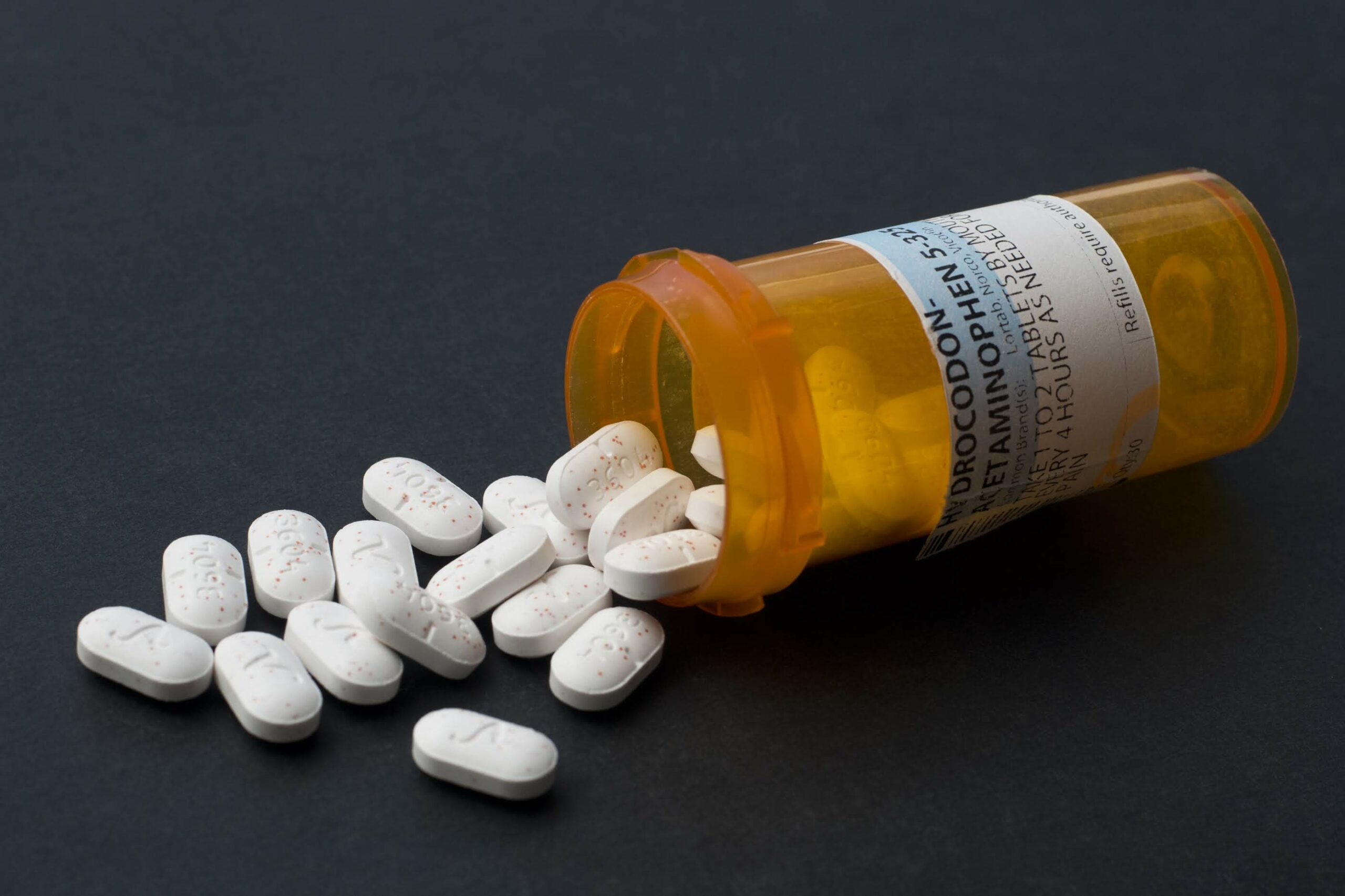Doctor traces fentanyl’s journey from miracle drug to outsized killer

The very characteristics that made fentanyl a medical breakthrough and a “miracle drug” are what make it one of the most dangerous and problematic in society today, according to experts battling Nevada’s opioid crisis.
In the medical world, because of fentanyl’s therapeutic index, or the ratio at which a drug is effective versus when it becomes toxic, it’s safer than morphine, according to Dr. Andrew Herring, an emergency physician and director of emergency pain management and addiction treatment at Highland Hospital in Oakland.
“You must be thinking, ‘Oh my God, he's crazy.’ No, it's the truth. It was all developed around this idea of making a safer opioid,” he said in his presentation at a Substance Misuse and Overdose Prevention Summit put on earlier this month by the Southern Nevada Health District. “It's just a substance. It's really what we bring to it that makes it either dangerous or a salvation. If you've had an operation, fentanyl is amazing … from a consumption standpoint, it's terrible.”
The community’s third annual summit focused on the concept of “facts, not fear” when discussing the opioid crisis. According to provisional data from Centers for Disease Control and Prevention’s National Center for Health Statistics, there were more than 107,000 drug overdose deaths in the United States during 2021, an increase of nearly 15 percent from 2020.
In Nevada, there were 788 unintentional drug overdose deaths in 2020, up 55 percent compared with the 510 deaths in 2019. In the first half of 2021, there were 436 drug overdose deaths.
At the beginning of 2022, four of the largest U.S. pharmaceutical corporations agreed to pay roughly $26 billion to settle several lawsuits linked to the deadly opioid crisis. Under the settlement, Nevada will receive more than $284 million over a period of 18 years, with the money going toward prevention, early intervention, workforce and housing services. Additional legal cases are still playing out and could bring even more money.
Pharmaceutical fentanyl is a synthetic opioid, approved for treating severe pain. However, many recent cases of fentanyl-related harm, overdose and death in the U.S. are linked to illegally made fentanyl — often mixed with heroin, cocaine and methamphetamine — and trafficked into the U.S. from countries such as China, India and Mexico.
Between January and June 2021, illicit fentanyl, which can be found in liquid, powder or pill form, was involved in 1 in 3 overdose deaths (or 34 percent) in Nevada, according to the State Unintentional Drug Overdose Reporting System (SUDORS).
The federal Drug Enforcement Administration (DEA) describes fentanyl as about 100 times more potent than morphine — one kilogram of the drug has the potential to kill 500,000 people.
The way fentanyl went from “miracle drug” to an epidemic was “a recipe for disaster,” Herring said. It started with doctors prescribing and exposing their patients to an “unprecedented quantity of medical opioids,” he added.
“Trillions of pills got into every single community in the United States … Things lose control when you have that scale of pills in the environment,” Herring said. “They just end up everywhere. So that meant that millions became dependent on opioids.”
After realizing the gravity of the problem opioids had created, doctors “turned it off,” Herring said, and without alternatives or treatment available for people who had become dependent.
“Opioids change you. There is a neuro-adaptation that occurs in every inch of your body … You cannot just simply say ‘no more opioids.’ Your body's going to fight you — just like you will fight for air,” Herring said. “It was incredibly naive to think we could, as physicians, as doctors, as health care systems, simply cut people off, without offering treatment.”
In 2015, Nevada passed several laws as part of the “prescription monitoring program” to tackle the opioid epidemic. This included the Good Samaritan Drug Overdose Act, which protects any person who calls 911 to assist someone who may be overdosing on opiates, and SB288, which developed a computerized program to track prescriptions for controlled substances.
In 2017, state lawmakers passed AB474, which required patient evaluations and risk assessments, as well as required health care occupational licensing boards to investigate fraudulent, illegal and inappropriate prescribing and dispensing.
Between 2016 and 2018, opioid prescribing rates in Nevada declined by 40 percent.
Opportunity
But international drug cartels found an opportunity. Fentanyl is lab made, so there is no need for poppy flower farmers (unlike heroin). Chemicals can be bought from Asian countries, and cartels have their own factories and can control the supply chain, Herring said.
“There was a demand that no one could have imagined — driven by the exposure to the medical opioids. They went from heroin to fentanyl,” Herring said. “And why? Are [drug traffickers] trying to poison their customers? No, they are trying to make money … This is the most cold, hard version of capitalism you could imagine.”
In the U.S., illegal fentanyl was involved in 70 percent of overdose deaths. Nearly 28 percent of all drug overdose deaths involved illegal fentanyl with no other opioids or stimulants, while cocaine was also involved in 13 percent, 7 percent also involved methamphetamine and 6 percent involved heroin.
The fentanyl epidemic has been politicized and oftentimes turned into an anti-immigration message. In a recent visit to Las Vegas, former President Trump attributed the influx of drugs in the country to the undocumented immigrants that come through the southern border and President Joe Biden’s policies.
“Our borders, where drugs come in, were very secure just 18 months ago. Drugs were way down and the number of people coming into our country illegally was at the lowest point ever in recorded history,” Trump said. “Now, they’re an open cesspool of drugs and criminals pouring into our country.”
Overall, fentanyl seizures by the U.S. Customs and Border Patrol have continued to increase since 2015, meaning the trend predated Biden taking office.
The DEA says the vast majority of fentanyl and other illegal drugs are smuggled through official ports of entry by cartels, not people attempting to make a life in the United States. And according to the Congressional Research Service, while the seizures data can help determine how and where illicit drugs enter the country, “there are no comprehensive data on the total quantity of foreign-produced illicit drugs smuggled into the United States at or between official ports of entry (POEs) because these are drugs that have generally evaded seizure by border officials.”
Still, Republicans are latching on to the narrative and blaming Biden for the fentanyl epidemic. In February, 116 Republican Congress members signed a letter demanding Biden take action on fentanyl by “securing our southern border.”
Republican gubernatorial candidate Clark County Sheriff Joe Lombardo also joined in with a digital advertisement, stating the country has been “left unprotected thanks to Joe Biden's open border policies. Keeping us safe means not allowing cartels and drugs to pour into our communities.”
A spokesperson for Lombardo ties the suspension of the “Remain in Mexico” policy, a Trump-era practice that required asylum-seekers to wait in Mexico for U.S. immigration court hearings, and ending construction of the border wall that Trump initiated to the fact that “more than 4.2 million illegal immigrants have crossed the border since Biden took office.” The spokesperson cited statistics of several million “encounters” by U.S. Customs and Border Protection during the Biden administration, which is made up mostly of people who were caught and expelled.
Lombardo’s campaign also associated that to the thousands of pounds of fentanyl and methamphetamine seized at the border — a sign that “many more drugs are likely getting through the border.”
The Lombardo campaign also pins blame on Gov. Steve Sisolak, criticizing him for signing a bill in 2019 that raises the threshold of drugs a person must have to be charged with trafficking. In deliberations about the bill, supporters argued that the previous law defining “trafficking” as having any more than 4 grams of a controlled substance, was applying a harsh prison penalty to an amount of drug that generally would not be considered as trafficking.
Harm reduction
Rather than expecting opioid-dependent patients to immediately overcome their addiction, Herring encourages doctors to take a harm-reduction approach and “empower” their patients to seek treatment and use overdose prevention methods such as fentanyl test strips.
Herring, who also is the principal investigator of the California ED-BRIDGE: Emergency Buprenorphine Treatment Project, said this includes buprenorphine, a medication that diminishes physical dependence to opioids, withdrawal symptoms and cravings.
“You can say whatever you want, ‘Oh, you're substituting a street drug for another drug’ … But I care that people are dying at this unbelievable rate. And I need my profession to try to stop that,” he said. “The key way to keep those sons and daughters, and husbands and wives, friends and loved ones, who have opioid use disorder from dying is to get them access to medication.”
Although medication is not the “solution for everything,” he added, success for him as a doctor looks like an authentic patient-provider connection, a patient-centered approach at all phases of treatment, reassurance of safety and following up.
Another overdose prevention method is the use of fentanyl test strips. People who actively use drugs can make sure they’re not taking a tainted substance, Herring said. Southern Nevada Health District and Northern Nevada HOPES, a nonprofit health center, offer free fentanyl testing strips as well as Narcan (Naloxone), an emergency opioid overdose treatment.
“Now long term, we all got to work together,” he said. “Short term, you can be the one that throws them that life preserver. They're drowning and buprenorphine is the life preserver and they can hold on to it, and they're not going to die that day.”
